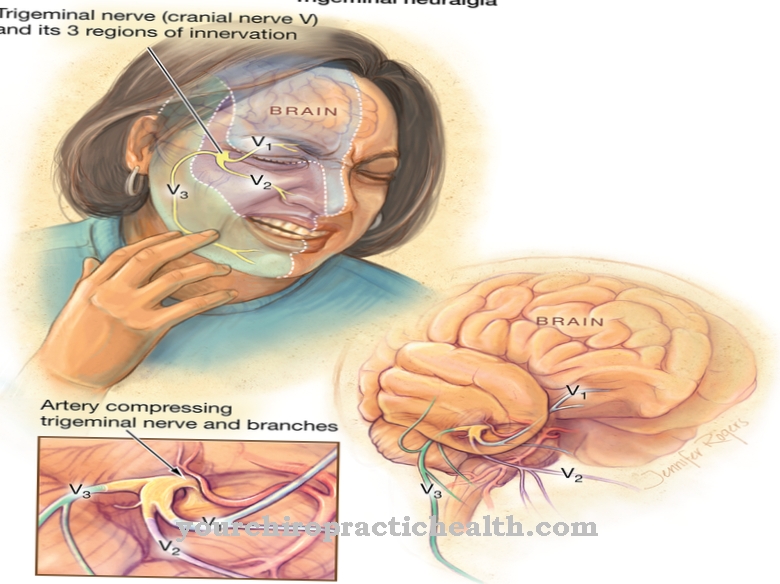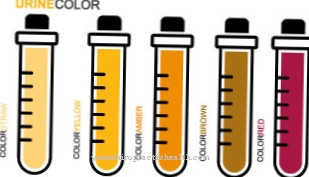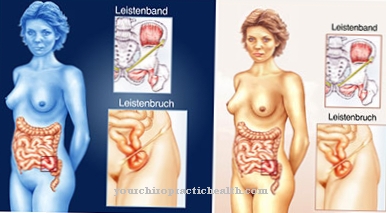The Steroid acne is a consequence of certain medications. Before switching to a new medication, however, it is useful to weigh up the medical costs and benefits.
What is steroid acne?

© Elizaveta - stock.adobe.com
The Steroid acne is a form of acne, i.e. an inflammatory disease that can be observed on the hair follicles, among other things. Steroid acne owes its name to the fact that the form of acne is usually the result of a specific medication.
It is true that the term steroid acne is also occasionally used in everyday use for acne that follows the abuse of steroids (such as the male sex hormone testosterone); however, this is not medically correct.
Steroid acne usually manifests itself as the appearance of red papules (nodules on the skin). So-called papulopustules can also develop less frequently; these are purulent papules.
If steroid acne has already existed for a few months, blackheads can also form as part of the disease. The skin changes caused by steroid acne are particularly evident on the shoulder and back.
causes
A Steroid acne can start from drugs that are used locally (for example in the form of ointments) and those that are used systemically (for example in the form of tablets; that is, with an effect on the entire organism).
However, steroid acne caused by local drug administration is comparatively rare. First of all, the drugs that can cause steroid acne include glucocorticoids (also known as cortisone).
The latter are used, among other things, to treat asthma and autoimmune diseases; Glucocorticoids are also occasionally used in organ transplants. In addition to cortisone, various antibiotics or sleeping pills can also lead to steroid acne.
Symptoms, ailments & signs
Steroid acne manifests itself primarily through skin changes such as pustules and papules. After two to three months, so-called comedones can form, extensive, usually very painful skin changes that are typically located in the area of the back and shoulders. The skin changes develop slowly and do not cause any noticeable discomfort at the beginning.
Itching, redness and pain do not occur until the disease progresses. In the further course, sensitivity disorders and even partial symptoms of paralysis can occur. The symptoms often represent a significant burden for those affected. The constant itching can lead to sleep disorders and malaise, which can result in further problems.
Some patients also suffer mentally from the skin changes. This can lead to social fears, inferiority complexes or depressive moods. The psychological complaints usually subside as soon as the steroid acne has been resolved. If the acne persists for a longer period of time, the mental ailments can become entrenched.
In addition, it can lead to scars, pigment disorders and other permanent skin changes. In addition, steroid acne causes the typical symptoms of steroid abuse. These can include gastrointestinal complaints, cardiovascular complaints and a variety of hormonal disorders.
Diagnosis & course
Can be diagnosed a Steroid acne Based on existing symptoms and an interview with the patient: If a patient has typical symptoms (such as papules) of a form of acne and it turns out that the patient is currently being treated with drugs that can cause steroid acne, the appropriate diagnosis is usually made.
The course of steroid acne depends, among other things, on the individual patient and the treatment measures that are being taken. If it is possible to discontinue the medication that presumably triggered the steroid acne, the disease often subsides on its own after a few weeks. Long-term consequences of steroid acne can be scars that develop on areas of the skin that have been affected by skin changes.
Complications
With steroid acne, those affected suffer from the usual symptoms of acne. As a rule, pimples or blackheads develop. These complaints can be very unpleasant, especially on the face or other visible areas, and have a very negative effect on the quality of life and aesthetics of the person concerned.
Most patients feel uncomfortable with the symptoms and suffer from inferiority complexes or from a significantly reduced self-esteem. Bullying or teasing can also occur. Steroid acne can also lead to pustules or papules. If the steroid acne occurs over a longer period of time, it can also cause scars on the face.
In many cases, these can no longer be treated directly and therefore remain on the face. When treating steroid acne, the triggering substance must first be discontinued. In many cases, the symptoms go away on their own. There are usually no complications. Treatment with ointments or creams is only necessary in rare cases. The steroid acne does not negatively affect the life expectancy of the patient.
When should you go to the doctor?
A doctor should always be consulted with steroid acne. This disease must be treated by a doctor as it cannot heal itself. If the steroid acne is not treated, the symptoms usually worsen.
A doctor should be consulted if the person concerned suffers from the formation of papules and pustules. In most cases, these appear on the person's face, but can also cover the entire body. These symptoms should be checked by a doctor, especially after taking steroids. Most patients also show redness or severe itching, which can also lead to sleep problems or disturbances in sensitivity. If these symptoms do not go away on their own, a doctor must be consulted.
Steroid acne can be treated well by a dermatologist or a general practitioner. The further course depends on the exact cause. Since steroid acne can also lead to depression or psychological upset, psychological help should also be sought. Usually steroid acne does not reduce the life expectancy of the person affected.
Treatment & Therapy
The therapy one Steroid acne initially depends on factors such as the severity of the symptoms and the cause of the corresponding skin changes. If possible, a first line of therapy is to stop (or at least limit) the drug treatment that led to steroid acne.
Before this step, however, a detailed discussion with the attending physician is necessary; The advantages and disadvantages of reducing previous medication administration must be weighed against each other in order to be able to make a responsible decision. However, a change in medication does not lead to spontaneous healing of steroid acne in all cases.
In cases in which a change in medication is not possible for medical reasons, or in which a change in medication did not lead to the desired success, symptomatic treatment of steroid acne is often carried out. One possible method of symptomatic therapy for steroid acne is so-called dermabrasion; Here, skin layers of the changed skin areas are removed with the help of a medical grinding head.
The skin symptoms of steroid acne can also be combated by applying so-called retinoids (chemical substances) locally. Cryosurgery, for example, is one of the surgical procedures used to treat steroid acne: As part of this procedure, changed skin tissue is surgically removed using very strong cold. With the so-called cautery, changed skin tissue of the steroid acne can also be surgically removed, for example using strong heat or chemical agents.
prevention
One can prevent it Steroid acne for example, by reducing risky drugs (if medically reasonable) or replacing them with alternative drugs. If such a measure is not medically justifiable and steroid acne has already occurred, methods of symptomatic treatment of steroid acne can be used in order to prevent the symptoms from worsening.
Aftercare
Above all, steroid acne is to be regarded as a serious side effect of a dedicated drug intake. In principle, the decisive measure is to discontinue the triggering preparation or doping agent. In this way, the symptoms can be alleviated in the long term. The skin changes themselves can be treated with typical home remedies and care products.
In addition to the classic skin care products, there are also some natural remedies that can be easily obtained in the drugstore. The latter in particular are characterized by positive effects on the skin. These are, for example, infusions with herbal tea as well as essential oils. To avoid scarring, contact with annoying pimples should be avoided if possible.
Treatment of the skin with cooling compresses is recommended. Cold helps relieve pain and reduce itching. In contrast, the moisture opens the pores. Only when the steroid acne does not subside or even worsens, the way to the dermatologist is inevitable.
It cannot be completely ruled out that in some cases an intolerance or an allergy causes the steroid acne. This needs to be clarified. Since steroid acne not infrequently promotes depression or psychological upset, the person affected should not be afraid to seek psychological help if necessary. In the end, any bullying can be effectively countered and targeted follow-up care can be carried out.
You can do that yourself
Steroid acne is primarily a serious side effect of drug intake. The most important measure is to stop the drug or doping agent that caused it. This can alleviate the symptoms in the long term.
The skin changes themselves can be treated with typical home remedies and care products. In addition to the classic skin care products from the drugstore, which should only be taken in consultation with a doctor due to aggressive ingredients, there are a number of natural remedies that have positive effects on the skin. These include infusions with herbal tea or essential oils. In order to avoid the formation of scars, contact with the pimples should be avoided as much as possible. It is advisable to treat the skin with cooling compresses. The cold soothes the pain and reduces itching, while the moisture opens the pores.
If the steroid acne does not subside or even worsens, a dermatologist must be consulted. Occasionally the disease is caused by an intolerance or an allergy that needs to be clarified. For this purpose, patients should consult a doctor at an early stage, who can initiate these steps and, if necessary, directly suggest therapy.




.jpg)

.jpg)






.jpg)

.jpg)
.jpg)











.jpg)